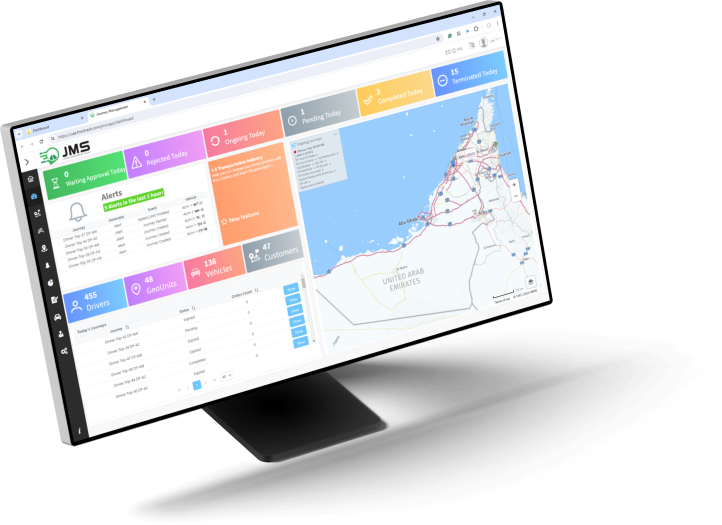Digitizes Journey Planning
Streamlines journey planning processes by digitizing tasks and routes, enhancing efficiency and accuracy.

Advanced tools and planning framework to minimize transportation risks, prioritize safety, and reduce unnecessary costs in fleet operations.
A Journey Management Plan is typically a set process that you follow for planning and undertaking road transport journeys in compliance with requirements, with the goal of arriving safely. There are many industries where driving is an essential part of work. It is also one of the most dangerous activities an employee will undertake as part of their duties. Driving is the most dangerous work activity, which is why journey management is so important. A journey management plan outlines the steps required to be as safe as possible before, during, and after each work-related trip. It can include the steps to take before a journey, like proper vehicle maintenance, driver behaviors like rest and what they consume before driving, and the time of day the journey commences. When the trip is completed, vehicle inspections are important, and drivers should ensure they get plenty of rest – especially after driving for long distances.
“Our Journey Management comprises a wholly online process incorporating journey requests, journey approvals, and journey monitoring, integrated with our fleet management platform, making it a unique and valuable offering.”
Our AI Dashcam revolutionizes fleet safety by leveraging state-of-the-art AI processors and advanced computer vision algorithms. Our groundbreaking technologies are designed to enhance your fleet safety and effectively mitigate risks on the road.
Planned journeys are captured in the system, associated risks relating to the driver, environment, and asset are identified, and a risk rating of the journey is calculated. The journey follows a flexible approval workflow management process based on the risk rating.
FMSiTrack vehicle tracking systems enable journeys and vehicles to be automatically monitored from the initial stages of planning through to approval and dispatch. The system generates exceptions and real-time notifications are then sent to operations staff.
FMSiTrack software can issue exception-based notifications, such as deviation from a route plan, progress, and status updates so that operations staff are immediately notified while a journey is underway and being monitored. A consolidated landing page of journey activity and status makes light work for operations staff.
The solution enables electronic road hazard assessments by approved route assessors. Before a journey, roads are checked for potential hazards like roadworks, weight limitations, and height restrictions. The information is then stored and used for future journeys following the same route.
FMSi Journey Management enables various static compliance checks to take place. These involve drivers (e.g., licensing and certification), passengers (e.g., seatbelt allocation per vehicle), and cargo (e.g. if the vehicle is certified to carry the cargo).
Journey management data can be useful for Key Performance Indicator (KPI) reporting. For example, managers can assess the number of journeys in a month, how many were approved and by whom, how many were deemed high-risk, and how many were completed as planned. Cube technology also enables the visualization of data as opposed to using static reports.





